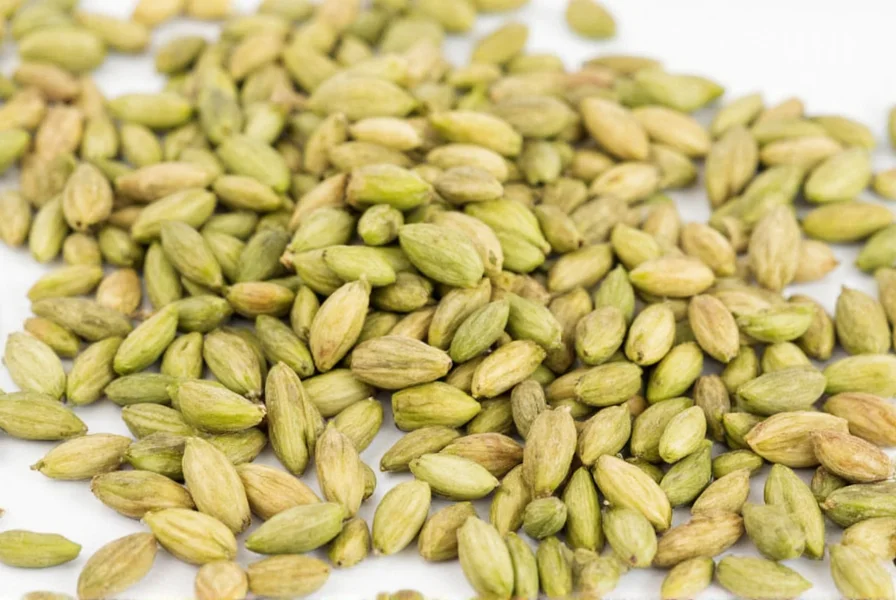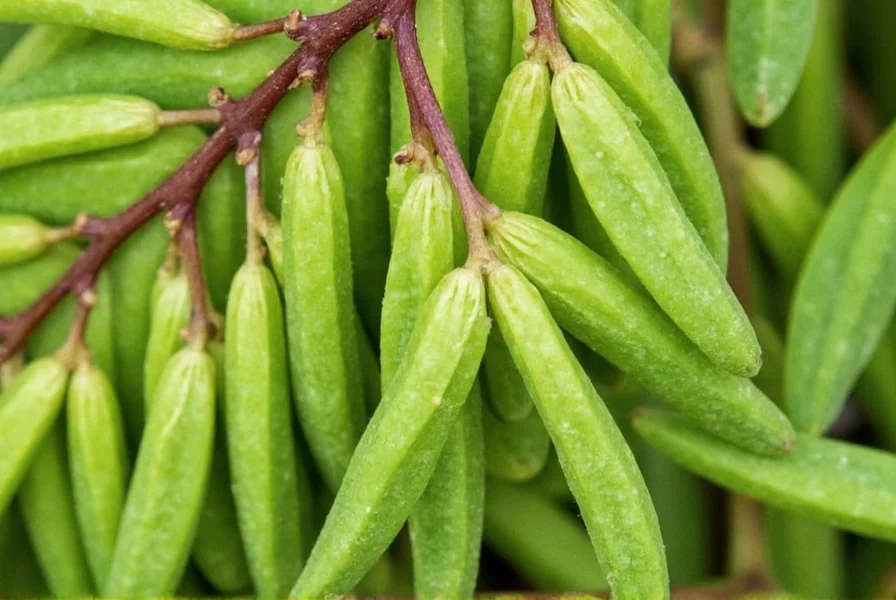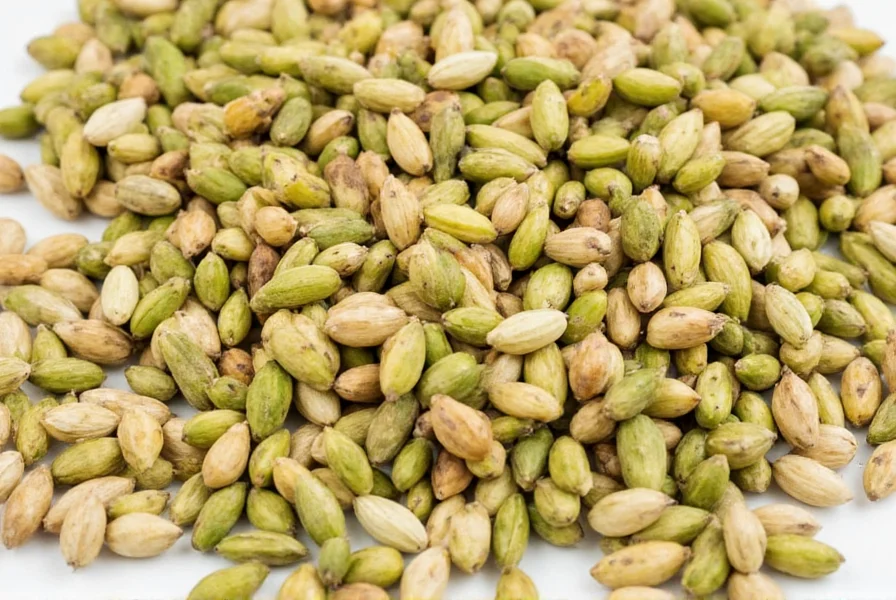Native to the humid forests of southern India, cardamom has been treasured for over 4,000 years across Middle Eastern, Indian, and Scandinavian cultures. The spice comes in small triangular pods containing tiny black seeds that deliver a complex flavor profile—citrusy, floral, and slightly peppery with eucalyptus notes. Two primary varieties dominate global markets: green cardamom, cultivated mainly in Guatemala and India, and black cardamom, grown predominantly in Nepal and Bhutan, which offers a smokier, more robust taste.
Botanical Characteristics and Production
Cardamom plants grow as perennial herbs reaching 6-12 feet tall with long, lance-shaped leaves and white or pale purple flowers. The valuable pods develop from these flowers, maturing in 6-8 months. Harvesting requires careful timing—pods must be picked just before full ripeness to preserve optimal flavor compounds.
| Variety | Scientific Name | Primary Growing Regions | Distinctive Characteristics |
|---|---|---|---|
| Green Cardamom | Elettaria cardamomum | Guatemala, India, Tanzania | Bright green pods, delicate floral aroma, sweet-citrus flavor |
| Black Cardamom | Amomum subulatum | Nepal, Bhutan, North India | Larger brown-black pods, smoky aroma from open-fire drying |
| Madagascar Cardamom | Amomum tsao-ko | China, Vietnam | Large pods, intense camphor notes, primarily medicinal use |
Culinary Applications Across Global Cuisines
Chefs worldwide value cardamom for its versatile flavor profile that enhances both sweet and savory dishes. In Scandinavian baking, it features prominently in lussekatter (saffron buns) and pepparkakor (ginger cookies). Middle Eastern cuisine uses it in coffee and rice dishes like biryani, while Indian kitchens incorporate it into garam masala and chai tea.

Professional chefs recommend using whole pods for infusions and grinding seeds fresh for maximum flavor impact. The spice pairs exceptionally well with citrus, chocolate, lamb, and other warm spices like cinnamon and cloves. When substituting ground cardamom for pods, use 1/4 teaspoon of ground spice for each pod called for in recipes.
Traditional Medicinal Uses and Modern Research
Ayurvedic medicine has utilized cardamom for centuries to address digestive issues, respiratory conditions, and halitosis. Contemporary research suggests potential health benefits including antioxidant properties, anti-inflammatory effects, and possible support for oral health. A 2022 study published in the Journal of Ethnopharmacology noted cardamom's potential role in managing blood pressure when consumed regularly as part of a balanced diet.
However, scientific evidence remains preliminary for many traditional claims. While cardamom shows promise in laboratory studies, more human clinical trials are needed to confirm therapeutic applications. As with any natural remedy, consult healthcare professionals before using cardamom for medicinal purposes.
Selection, Storage, and Culinary Tips
When selecting cardamom, look for plump, brightly colored pods that feel heavy for their size—this indicates high essential oil content. Avoid pods with visible cracks or excessive browning. For optimal freshness, store whole pods in airtight containers away from light and heat, where they'll maintain potency for 6-12 months. Ground cardamom loses flavor rapidly and should be used within 3-6 months.

Culinary experts recommend toasting whole pods briefly in a dry pan before use to enhance flavor complexity. For baking applications, crush seeds with a spice grinder or mortar and pestle just before incorporating into recipes. In savory dishes, add cardamom early in the cooking process to allow flavors to meld, while in desserts, add it later to preserve delicate aromatic compounds.
Economic and Cultural Significance
Cardamom represents a vital cash crop for smallholder farmers in developing nations, with Guatemala now surpassing India as the world's largest producer. The global cardamom market reached $485 million in 2023, driven by increasing demand from food manufacturers and health-conscious consumers. Traditional harvesting methods remain labor-intensive, contributing to its premium price point.
Culturally, cardamom features prominently in Middle Eastern hospitality rituals, where spiced coffee symbolizes welcome and respect. In Indian weddings, cardamom-scented sweets represent prosperity and auspicious beginnings. These enduring traditions highlight cardamom's role extending far beyond mere culinary ingredient—it serves as a cultural touchstone connecting generations across continents.
Frequently Asked Questions
What's the difference between green and black cardamom?
Green cardamom (Elettaria cardamomum) has a delicate, floral flavor profile with citrus notes and is primarily used in sweet dishes and beverages. Black cardamom (Amomum subulatum) features a larger, darker pod with a distinctly smoky aroma from traditional open-fire drying methods, making it better suited for savory meat dishes and robust stews. The two varieties are not interchangeable in recipes due to their significantly different flavor profiles.
Can I substitute ground cardamom for whole pods in recipes?
Yes, but with important considerations. Use 1/4 teaspoon of ground cardamom for each pod called for in a recipe. However, whole pods provide more complex flavor as they release oils gradually during cooking. For best results, lightly crush whole pods before adding to liquids for infusions, or grind seeds fresh when a recipe specifically calls for ground cardamom. Pre-ground cardamom loses potency quickly, so whole pods offer superior flavor retention.
How should I store cardamom to maintain freshness?
Store whole cardamom pods in an airtight container away from light, heat, and moisture. Properly stored, they maintain optimal flavor for 6-12 months. Avoid refrigeration as humidity can degrade quality. Ground cardamom loses potency much faster—use within 3-6 months for best results. For extended storage, freeze whole pods in vacuum-sealed containers where they'll retain quality for up to 2 years. Always check for strong aroma before use as the primary freshness indicator.
Is cardamom safe for daily consumption?
Yes, cardamom is generally recognized as safe for daily consumption in culinary amounts. Most adults safely consume 1-3 grams (about 1/2 to 1 1/2 teaspoons) daily. However, excessive consumption (more than 10 grams daily) may cause digestive discomfort in sensitive individuals. Those with gallstones should consult healthcare providers before regular consumption, as cardamom may stimulate bile production. Pregnant women should consume cardamom in typical food amounts rather than medicinal quantities without medical consultation.











 浙公网安备
33010002000092号
浙公网安备
33010002000092号 浙B2-20120091-4
浙B2-20120091-4